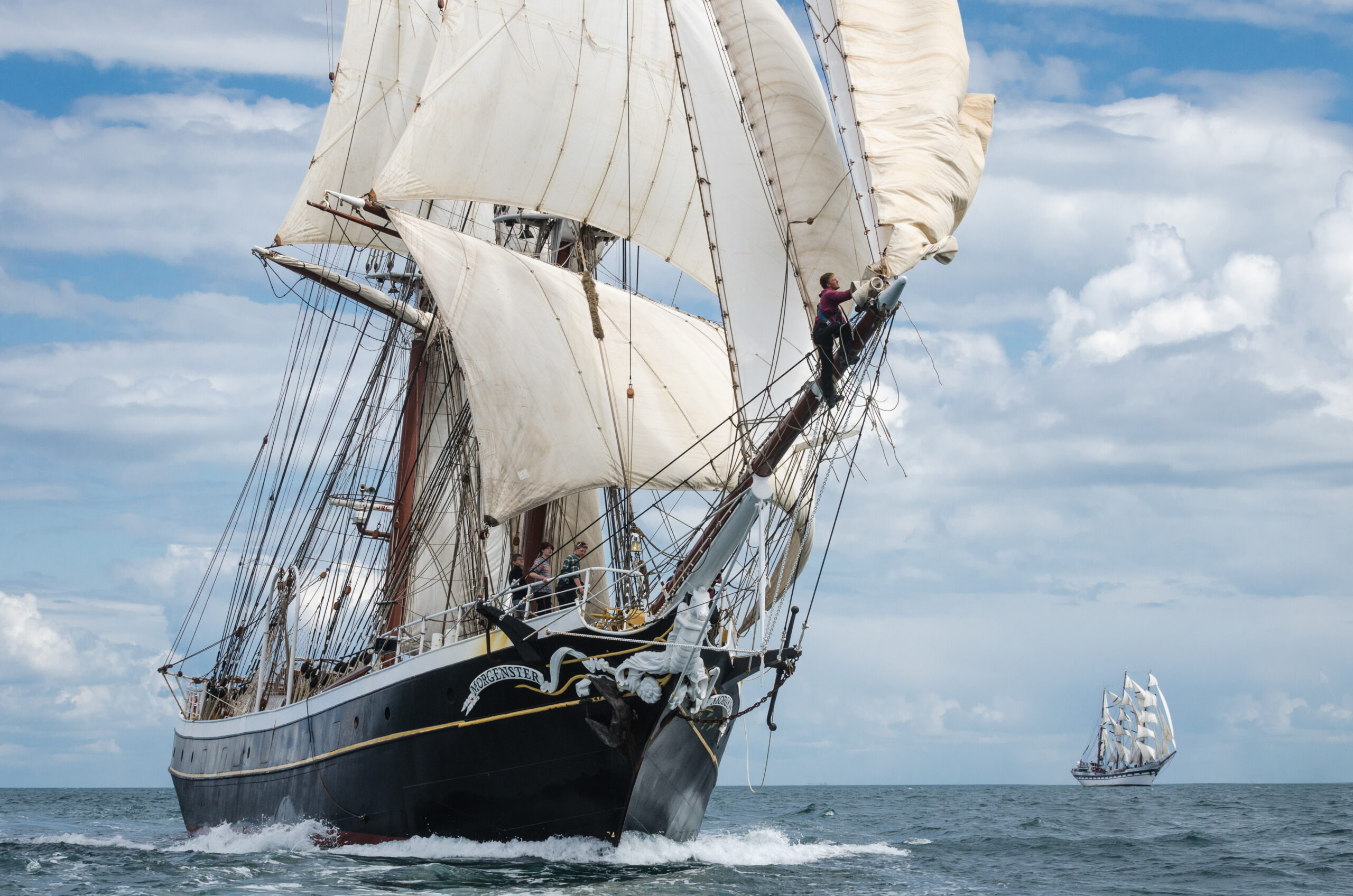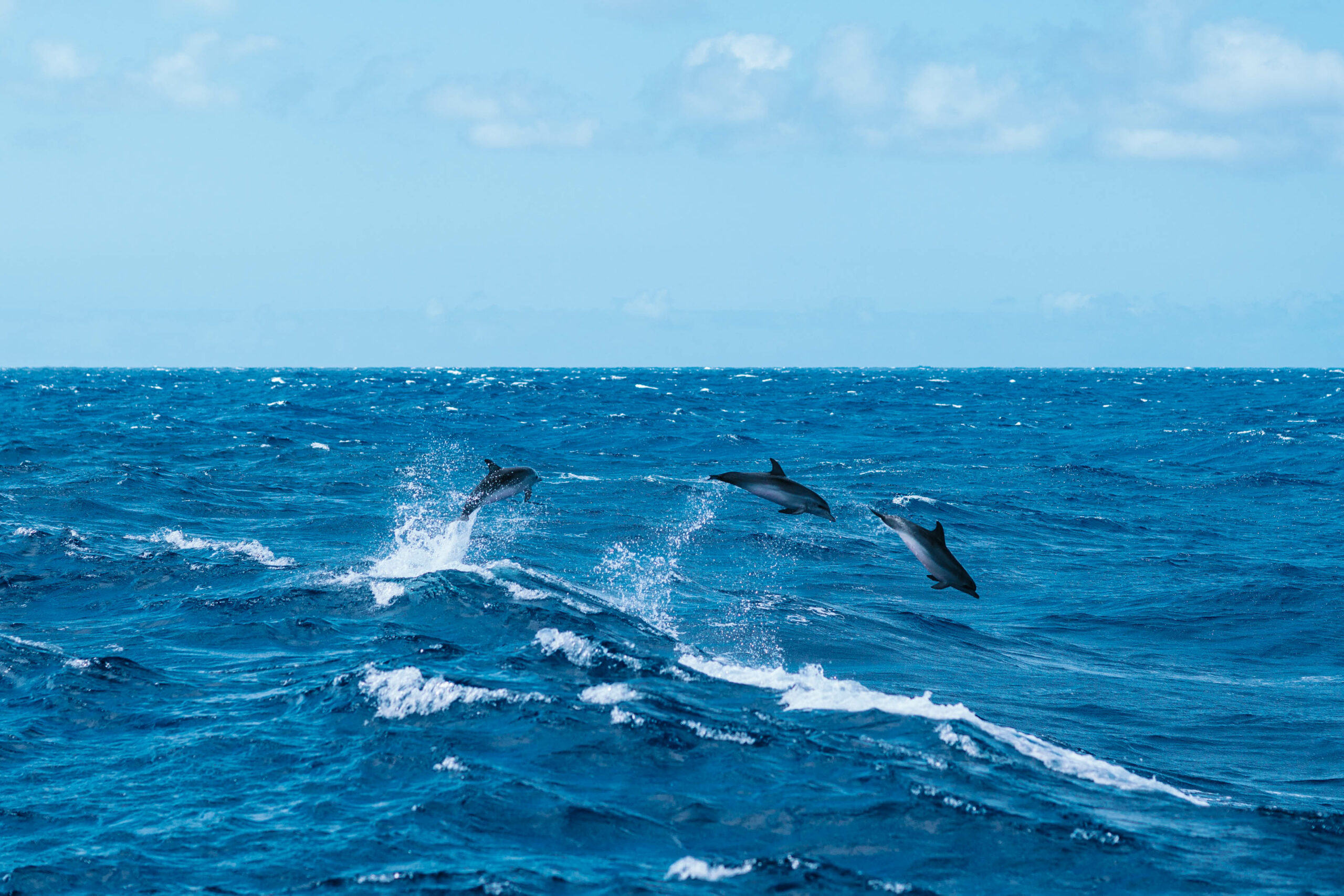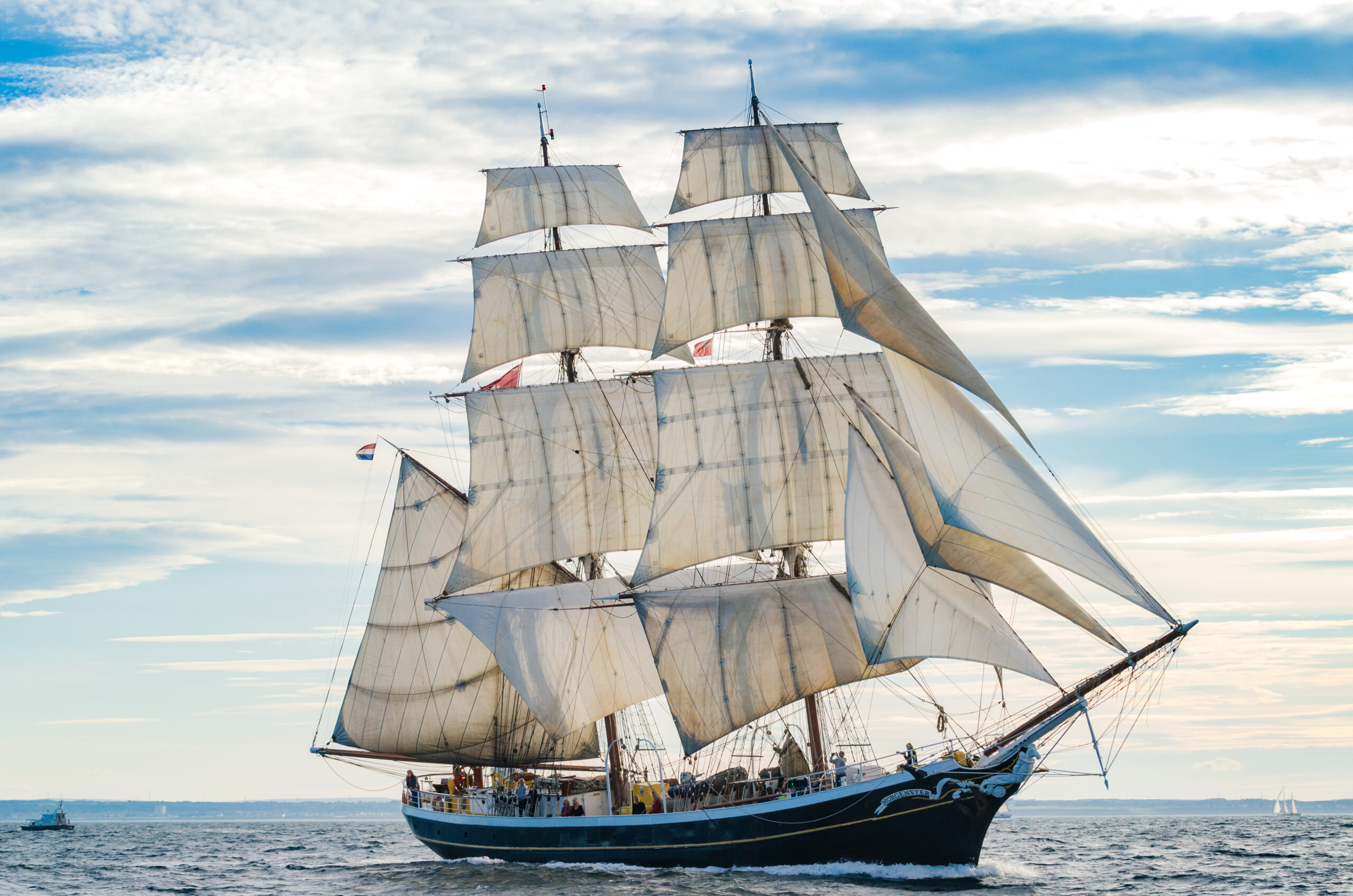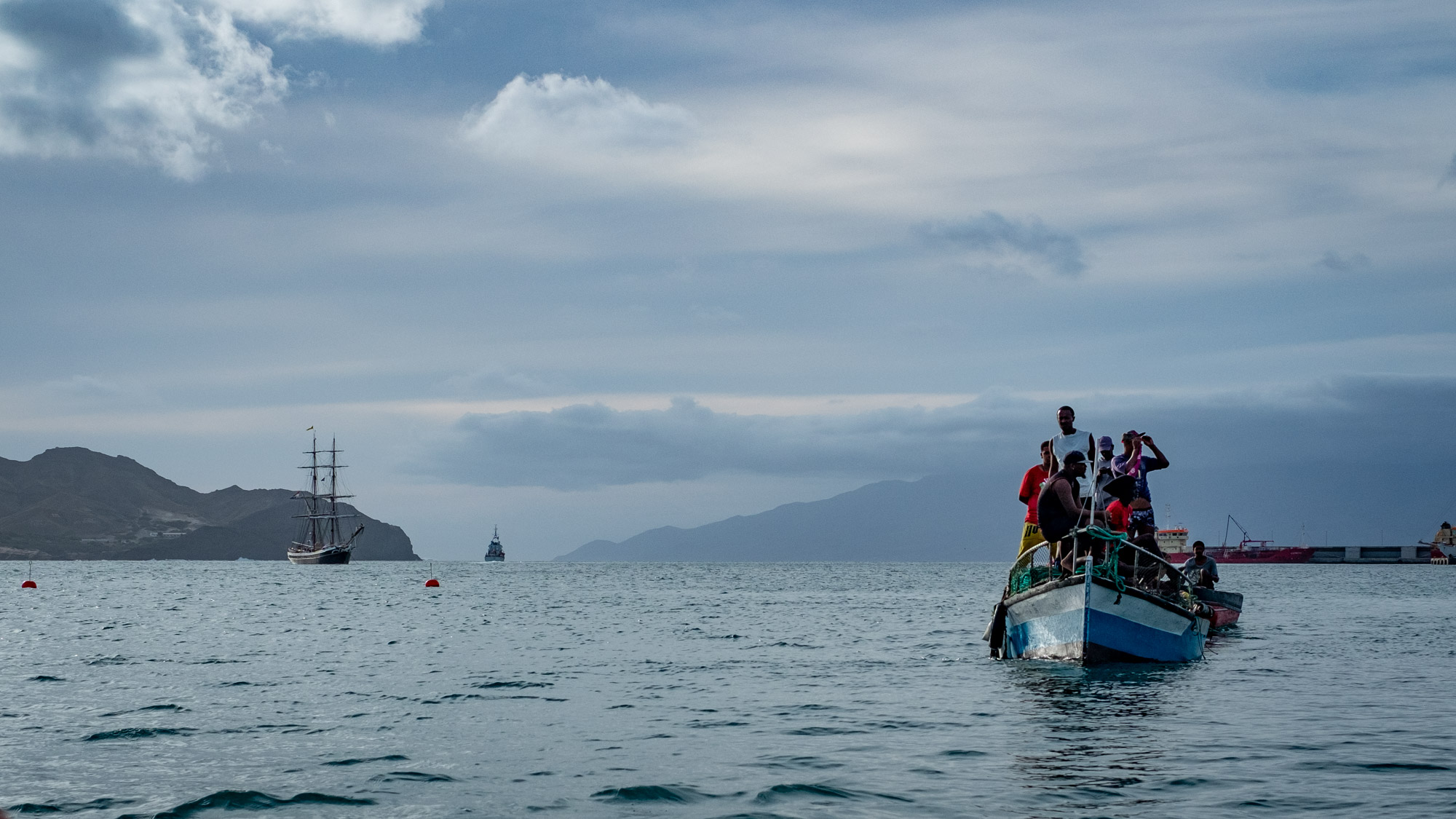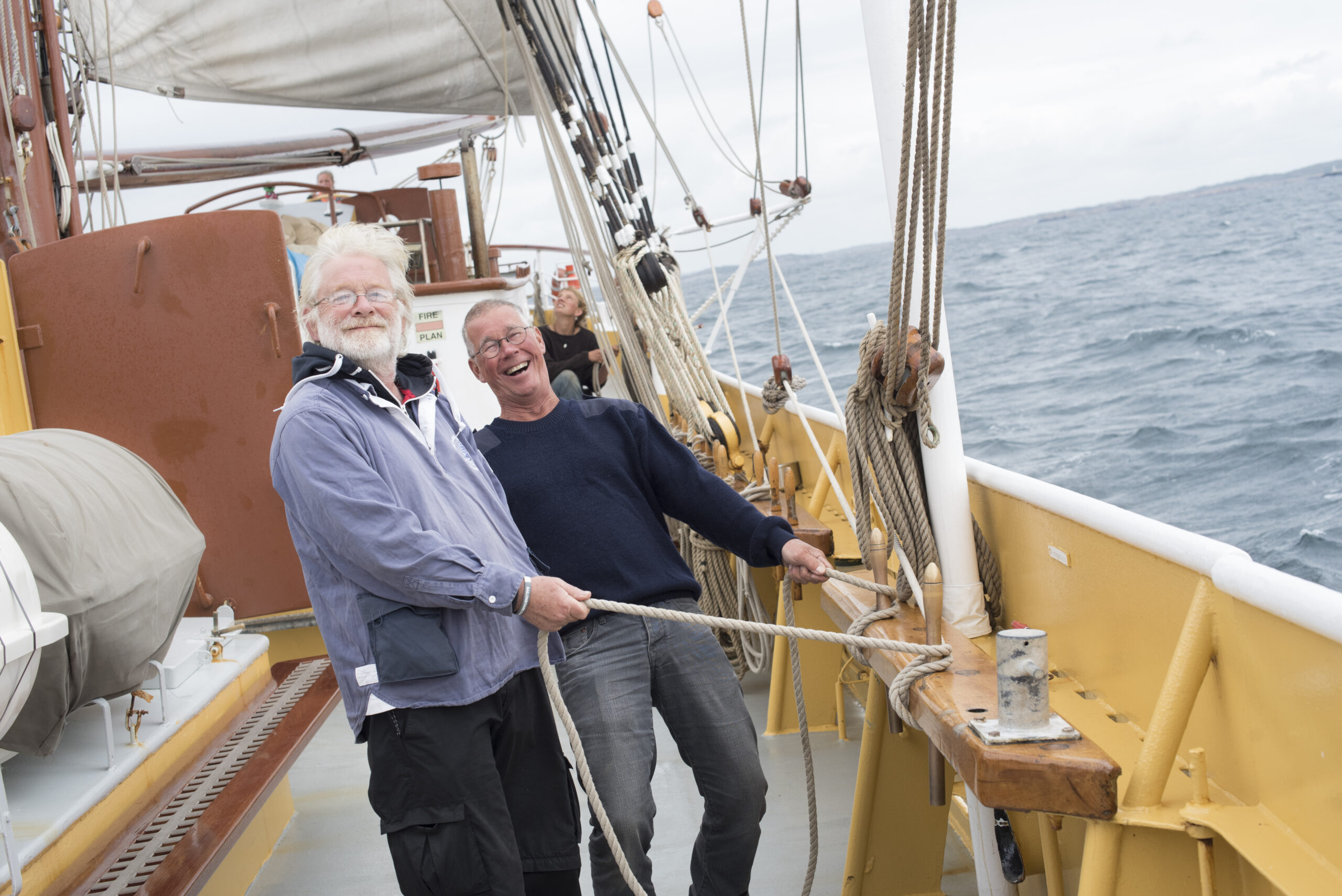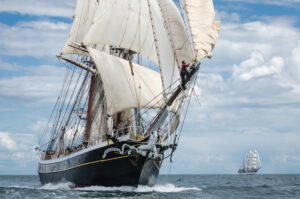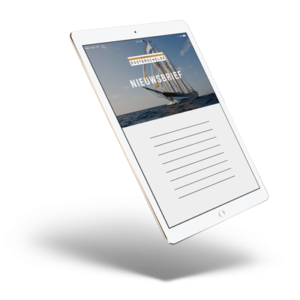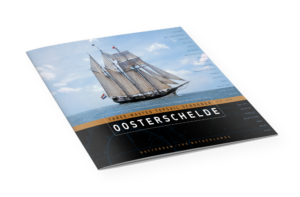Sal – Den Helder
This is the Mile Maker from Cape Verde, via Horta, to Den Helder.
NUMBER OF DAYS
EMBAR
01-03-2025, 17:00
Sal, CVDISEMBAR
30-03-2025, 10:00
Den Helder, NLPrice p.p.
Level
Sal – Den Helder
Voyage description
From the Amilcar Cabral airport, you can take a cab to the town of Palmeira. We recommend that you book accommodation in the town of Santa Maria, should you wish to enjoy a few days on the island of Sal prior to your trip.
In the bay of Palmeira, the ‘Morgenster’ is anchored. The crew will bring you aboard by dinghy and your adventure has begun! This trip you step into the real sailor’s life. You are part of the crew and participate in a navigational watch. Together we do everything necessary to arrive safely and quickly at our destination.
Before we leave, the crew will give a detailed explanation and there will be regular instructions along the way. You will learn – in the process – more and more about sailing a clipper-brig, about navigation, meteorology and maintenance. Ahead of us lies the Atlantic Ocean and during this journey we will not make any stops. Nevertheless, the trip is very versatile.
Cape Verde is situated in the trade wind belt. That means good weather, and winds from a northerly to easterly direction. So, we try to steer as close to the wind as possible. After a few days, the trade wind becomes less resistant and the temperature slightly lower. Suddenly we are now sailing in a climatically very different area: the west wind belt. The weather here is changeable and every so-many days low-pressure system passes. At this latitude, that means mostly westerly winds, drizzle and, after the cold front passage, clearing again. The wind is changeable and so we regularly must set the sails, reef, unreeve or change course.
Closer to the Azores, there is a good chance of seeing whales. Even this far offshore there are still many birds around us. With some luck we will see not only schools of flying fish, but also dolphins, a sunfish, or other marine animals. We expect to arrive in Horta on the island of Faial no later than March 14.
On March 16, we will set sail again for the second part of our voyage to Den Helder. We recommend traveling to Faial a few days earlier. The island is lush, and spring is the most beautiful time to visit it. At this latitude, spring sets in early and it is not cold. But the Azores has a true maritime climate: four seasons in one day, they do say. So, in addition to shorts, you should also bring a raincoat. As soon as you come on board, the crew will give you a detailed instruction on life on board, safety procedures, as well as the journey we are about to undertake.
Close to the Azores there is a good chance that we will see whales, but even later during the trip we are not alone. Even this far out at sea there are birds around us and occasionally we see a moonfish, dolphins, and other sea creatures. As we approach the English Channel, the colour of the deep blue waters of the Atlantic Ocean changes to green. A sign that the continental shelf is beginning. Here the seabed rises steeply from a depth of five kilometres to a depth of 200 meters. Hundreds of seabirds and fishing boats mark these nutrient-rich waters.
If the trip goes well, we will certainly have time for one or two stopovers in an English or French port. Or on one of the Channel Islands. In the last week of March, we will sail through the Strait of Dover into the North Sea for the final miles to Den Helder, where we will arrive on March 29. On March 30, after breakfast, you will disembark at Willemsoord, the historic maritime heart of Den Helder.
Sailing on a large square rigged sailing ship is a special experience. Especially on an ocean-going voyage like this one. On the long ocean swell the ‘Morgenster’ feels perfectly at home. On board the ‘Morgenster’ you are not a passenger but guest crew. You will be assigned to a watch together with the crew and receive instruction so that you can actively help sail, steer and navigate the ship. Conditions at sea are changeable and on a sailing ship the natural elements have to be constantly taken into account. You will also be explained how to help yourself and your fellow guests with life on board and in emergencies. Sailing experience is not required. The crew will be happy to explain to you what all the lines, halyards and sheets are for. Most sailors like to actively participate in the work on board, but of course your wishes and possible limitations will be considered.
The shipping company would like the ‘Morgenster’ to be accessible to the widest possible audience, but you must realize that you are making a voyage aboard a seagoing tall ship. This requires more of your physical ability than a daily walk. Some voyages are more challenging than others. With the different levels, we give an indication of how heavy the voyage can be. If you are unsure whether a voyage is suitable for you, it is important to contact the shipping company for advice.
Level 1 voyages are suitable for anyone with good mobility and health. Often these voyages are in sheltered areas or close to the coast. However, it is still a journey on a sailing ship, at sea and so you must weigh up for yourself whether you can cope.
Level 2 voyages are often heavier or further from home. You must be able to cope well under sometimes challenging conditions, but in case of need, the ship can be in a port within 24 – 48 hours. There is no age limit, but you may be asked to provide additional proof of fitness or health.
Level 3 voyages are only for the experienced and fit sea traveler. The weather can be challenging and there are no ports to call at, along the way. We are out of helicopter range and medical care from shore is not available. These trips are open to people up to 73 years of age, and you may be asked to provide additional proof of fitness or health.
Reservation
Morgenster Sal – Den Helder
| Ship | Morgenster |
|---|---|
| PRICE P.P. 4-PERSON CABIN | €3655 |
| PRICE P.P. 2-PERSON CABIN | €4060 |
| NUMBER OF DAYS | 29 |
| EMBARKATION DATE | 01-03-2025 |
| EMBARKATION TIME | 17:00 |
| EMBARKATION PLACE | Sal, CV |
| DISEMBARKATION DATE | 30-03-2025 |
| DISEMBARKATION TIME | 10:00 |
| DISEMBARKATION PLACE | Den Helder, NL |
| Level | 3 |




